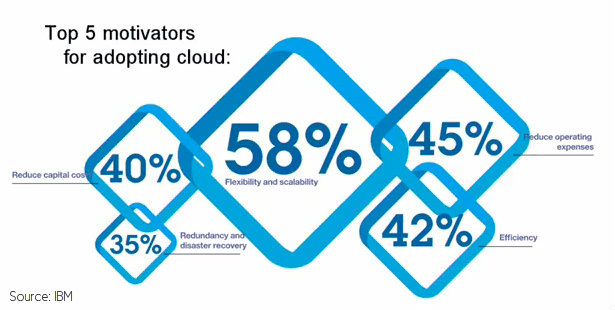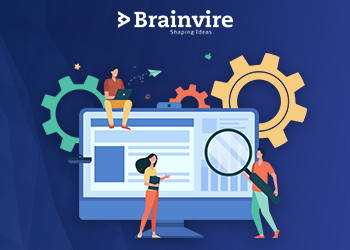Cloud Computing, as a phrase, has been in extensive use since the recent few years. It has been enticing enterprises all over the world since it can enable them to focus more on their core businesses leaving the secondary, peripheral activities for itself. Providing platform, infrastructure, and software as services, cloud computing ensures “on demand†facility with no investment on purchasing hardware and software. This service also provides scalability since the “pay-per-use†aspect makes it easy for enterprises to pay for added services as and when there is a requirement.
New Business Model With Cloud
Cloud Computing has opened up opportunities in marketing by providing a new business model where capital expense like hardware is converted into revenue expense. It provides flexibility and availability by allowing you to run your business from almost anywhere. It is estimated that in the coming years most of the companies will shift to the cloud, that is, instead of purchasing the services and software, they will hire the services of cloud computing that would not only be cheaper but efficient and agile at the same time.
In-Transit with Cloud
Cloud Computing is most popular among the small and medium-sized enterprises, since the cost of hiring an IT staff to build, manage and maintain the infrastructure is high and these enterprises are the ones that are rapidly adopting the cloud technology discarding legacy systems, to deliver new products and services quickly at low costs.
Irrespective of the size of your organization, the benefits will be consumed whenever they are offered. With the cloud technologies, simplified infrastructure management and quick deployment is offered at low costs. So, why would not one transit with the clouds?
What the Giants Have to Say
Large software vendors like HP, Salesforce, IBM and Microsoft have played their own part towards the transition to cloud-based development. By exploiting the SaaS model of cloud computing, business applications such as Customer Relationship Management (CRM), knowledge management, web-development software, to name a few, are offered to small and medium-sized enterprises as utilities.
Dissecting the Cloud
The interest that Cloud Computing arouses is perplexing because not all people can precisely explain what exactly cloud is all about. Based on the level of security and location of the premises, cloud can be of two types: public and private. In case of public cloud, resources such as servers, storage, etc. are available over the internet.
Private cloud can be internal or external. An internal cloud contains resources in the premises of your enterprise, mainly the data center. The control over the resources is also internal.
Resources on an external private cloud resides outside the premises of your enterprise, on dedicated servers, making it more secure than the public cloud.
Concern over the Cloud
Cloud Computing being a buzzword for the technical world also embraces certain skepticisms with it. The raised eyebrows are due to the concerns about data security, privacy, and performance. Data associated with the systems such as legal, medical and banking require restrictions of access needing private clouds for storage and processing. There are, however, experts from the corporate giants who believe that security issues will be addressed and improved as cloud computing matures with time. In the IT sector, technologies can come and go in no time. But those platforms and technologies that stay enhance continuously.
Epilogue
Although we are talking a lot about cloud computing and the adoption of cloud services by enterprises in the near future, discarding the existing infrastructure to embrace the cloud may not always be the best solution. An approach of complementing the two would be perfect. Since you do not need to invest on new infrastructure, your existing infrastructure can be honed to provide better network services, trained personnel, and research and development.





